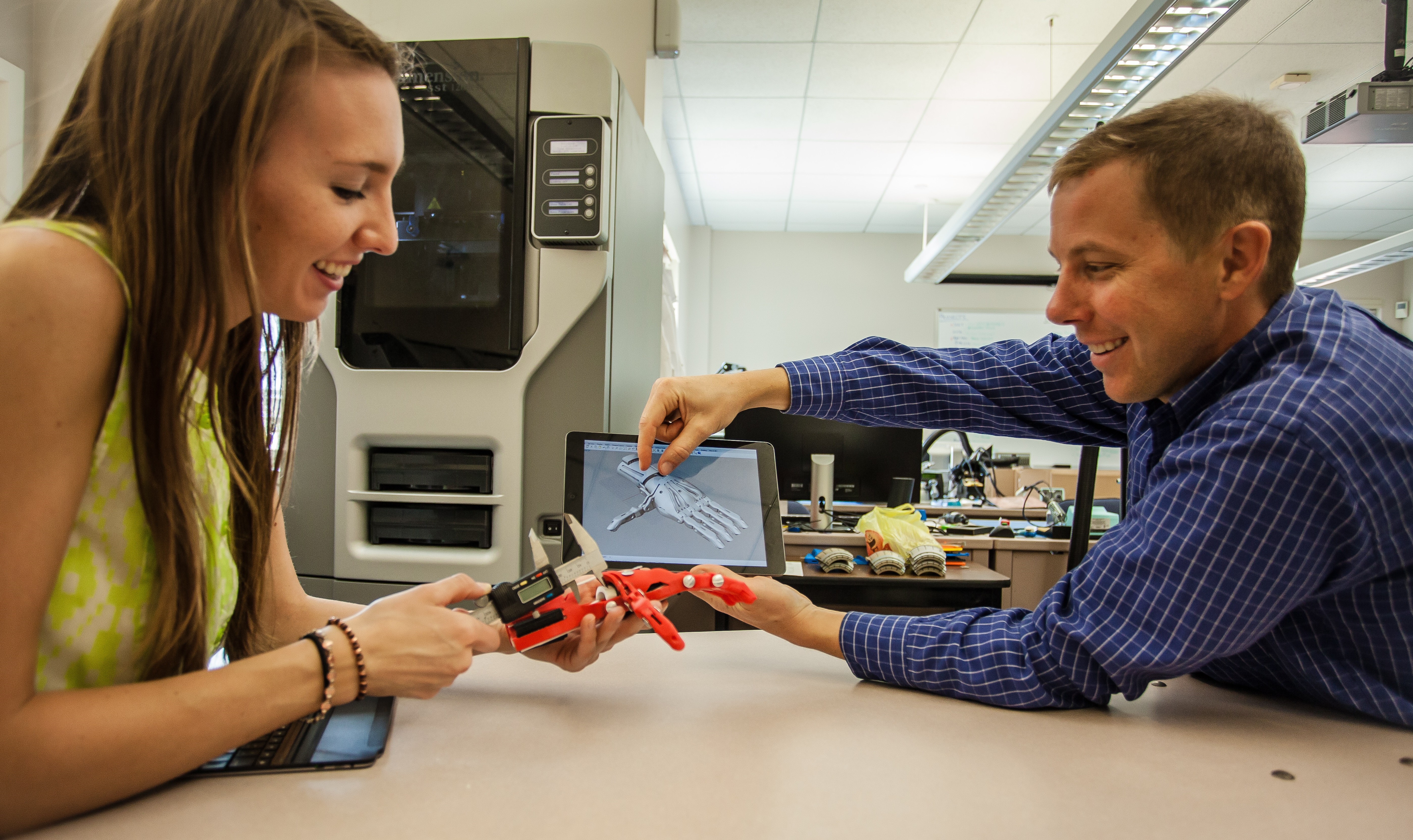SUNY invests in the future of additive manufacturing in New York State

Collaboration by SUNY New Paltz, Stony Brook University and the University at Buffalo to develop new materials and technologies for printing
The SUNY Network of Excellence in Materials and Advanced Manufacturing has provided new support toward a number of exciting projects in digital and additive manufacturing, also known as 3D printing. One such project is a collaboration by SUNY New Paltz, Stony Brook University and the University at Buffalo to develop new materials and technologies for printing of polymers, composite materials, metals, and integrated sensors. The project aims to help stimulate university-industry collaborations across New York State.
“The Hudson Valley Advanced Manufacturing Center (HVAMC) is excited to be part of this research program,” said Dan Freedman, dean of the School of Science & Engineering and director of the HVAMC. “The mission of the HVAMC is to assist private business in adopting 3D printing technology and this research will provide fundamentally important data for the applied use of 3D printing in a wide variety of applications. As a state-wide collaboration between three SUNY campuses, the HVAMC and Stratasys, this project is a perfect example in how to leverage the talent and resources across the SUNY system.”
A total of $125,000 is being invested in the second year of the program, building on a series of conferences supported by the SUNY Network of Excellence program, which has brought together more than 150 researchers and businesses to discuss the latest research and engineering developments being developed at SUNY campuses and their partners at private educational institutions, manufacturers and established consortia. These include: the Hudson Valley Advanced Manufacturing Center (HVAMC) at SUNY New Paltz, America Makes, the National Additive Manufacturing Innovation Institute, Buffalo Manufacturing Works (operated by EW) and the Composites Prototyping Center of the Long Island Forum for Technology.
Projects supported in the second year of the SUNY Network of Excellence program include a collaboration led by SUNY New Paltz on establishing the relationship between processing, structure, properties and performance of printed polymers and composites; a collaboration led by the University at Buffalo on 3D printing-based fabrication of conformal sensors; and collaborations among SUNY New Paltz, Stony Brook University and the University at Buffalo to expand projects and build expertise which respond to the challenges facing industry in advancing manufacturing through additive techniques.
Other campuses, including Binghamton University, SUNY Polytechnic, SUNY College of Environmental Science and Forestry, and Farmingdale State College, are also actively participating in planning for new projects and collaborations.
“Our research is important because additive manufacturers need to know what they can expect out of what they print,” said Jared Nelson, assistant professor in the division of engineering at SUNY New Paltz and principal investigator for one of the SUNY Materials and Advanced Manufacturing Network of Excellence grants. “SUNY-wide efforts such as these new and interesting collaborations allow students to be involved in cutting-edge, important research.”
The new funding will also allow the Network focus group to expand interactions with America Makes, and develop new seed projects in additive manufacturing of advanced metal alloys—an area of growing importance for manufacturers in New York State and nationally.
Gary Halada, associate professor in Materials Science and Engineering at Stony Brook University, and coordinator of the Network focus area in additive manufacturing, believes that through a collaborative approach which leverages the knowledge, expertise and facilities at all SUNY campuses and that of partners at Brookhaven National Laboratory and other institutions of higher education, New York State will become a national and global leader in advanced manufacturing.
“Our faculty, our laboratories, and certainly our students will provide a driving force for innovation and growth,” said Halada. “We have the opportunity to optimize the application of 3D printing to create everything from polymer and nanocomposite scaffolds optimized for growth of living tissue to multi-component functional electronic devices to high performance complex metallic parts for engines and fuel cells.”
He noted, the support provided by the SUNY Network of Excellence is crucial to this effort, and demonstrates the commitment of New York State leadership to economic growth as well as scientific preeminence.

